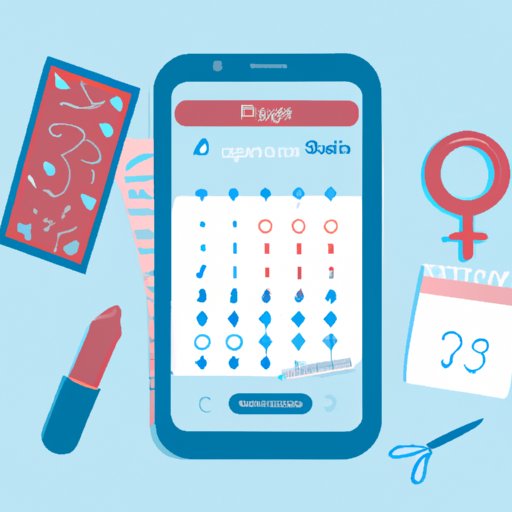
I. Introduction
Calculating the next period date can be a daunting task for many women. With varying cycle lengths and unpredictable menstruation, it’s difficult to predict the exact date of the next period. However, tracking the menstrual cycle is crucial in determining the approximate date of the next period. In this comprehensive guide, we will explore different methods of calculating the next period date.
II. Understanding the Menstrual Cycle
The menstrual cycle refers to the reproductive hormonal process that occurs in women. It typically lasts for 28 days, but it can range from 21 to 35 days. The menstrual cycle has different phases, including the follicular phase, ovulation, and luteal phase. Tracking the menstrual cycle is crucial in determining the next period date since it helps predict when ovulation will occur, which is a clear sign that the next period is on its way.
III. Calendar Method
The calendar method is a simple yet effective way to track the menstrual cycle. All you have to do is mark the first day of your period on a calendar and count the number of days until the next period. To get an average cycle length, track your period for several months and divide it by the number of cycles. You can then predict the approximate date of your next period by adding the average cycle length to the last period’s start date. For instance, if your cycle is 28 days and your last period started on January 1st, your next period would be on January 29th.
IV. Use of Online Calculators
Online calculators are becoming increasingly popular in helping women calculate their next period date. There are different types of online calculators, including those that use the calendar method and those that use algorithms to predict the next period date based on past periods’ data. To use an online calculator, you need to input the start and end date of your previous period, the average length of your cycle, and the length of your luteal phase. The calculator will then predict the next period date.
The benefits of using online calculators include convenience, accuracy, and ease of use. However, the limitations include the fact that they rely on the assumption that the menstrual cycle is regular, and they may not provide accurate predictions for women with irregular cycles.
V. Ovulation Prediction Kit Test
Ovulation prediction kit tests are an accurate way to predict the next period date. These kits detect the luteinizing hormone (LH) surge, which occurs 12-36 hours before ovulation. By tracking the LH surge, you can predict when ovulation will occur, and hence, the next period date. Ovulation prediction kits come with urine test strips that you dip into a sample of your urine. The kit will then show a positive or negative result indicating the likelihood of ovulation in the next 12-36 hours.
The effectiveness of ovulation prediction kits depends on the individual’s menstrual cycle and the correct use of the test. Some limitations of using ovulation prediction kits include the cost and the need to test every day during the ovulation window.
VI. Basal Body Temperature Method
The basal body temperature method involves tracking your body temperature to predict the next period date. Basal body temperature, which is the body’s resting temperature, rises after ovulation and remains elevated until the next period. To use this method, you need to take your temperature every morning before getting out of bed and record it on a chart. Once you have several months’ worth of data, you can determine your average pre- and post-ovulation body temperature. By tracking your current temperature, you can predict when ovulation has occurred and when your next period will start.
The benefits of using the basal body temperature method include its accuracy and the fact that it’s free. However, the limitations include the need to take your temperature at the same time every day and the possibility of inaccuracies due to factors such as illness or lack of sleep.
VII. Consulting a Doctor
If you’re having difficulty calculating your next period date or have irregular periods, it’s advisable to consult a doctor. A doctor can help identify any underlying medical conditions that may be affecting your menstrual cycle and recommend appropriate treatment. During the consultation, the doctor may ask questions about your menstrual cycle, perform a physical exam, and order tests to diagnose any underlying conditions.
VIII. Period-Tracking Apps
Period-tracking apps are an increasingly popular way to track the menstrual cycle and predict the next period date. These apps use algorithms to predict future periods based on past data entered by the user. Some popular period-tracking apps include Clue, Flo, and My Calendar. Using period-tracking apps has several benefits, including the convenience of tracking data on your smartphone, personalized insights, and helpful reminders. However, some limitations include the need for regular data entry and the possibility of inaccurate predictions due to algorithmic errors and the assumption that the menstrual cycle is regular.
IX. Conclusion
In conclusion, there are different methods that women can use to calculate the next period date. These include the calendar method, online calculators, ovulation prediction kit tests, basal body temperature method, consulting a doctor, and period-tracking apps. It’s advisable to experiment with the different methods to determine the best one for you. Taking control of your menstrual cycle can empower you to make informed decisions about your reproductive health.





